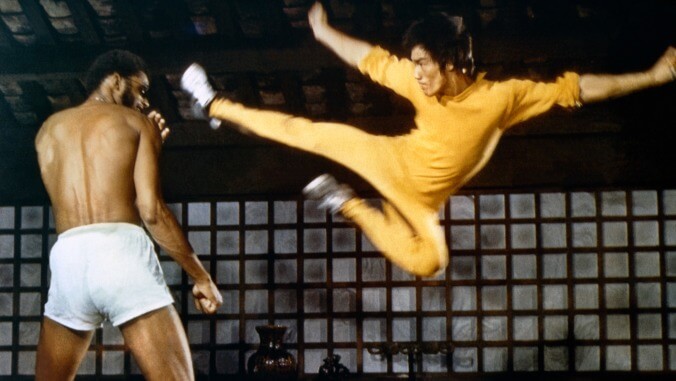Kareem Abdul-Jabbar is the latest to dunk on Quentin Tarantino's vision of his friend Bruce Lee

The discourse surrounding the portrayal of martial arts legend Bruce Lee in Quentin Tarantino’s Once Upon A Time…In Hollywood continues apace today, with The Hollywood Reporter publishing a piece from Lee’s long-time friend, co-star, and student Kareem Abdul-Jabbar, blasting Tarantino’s vision of the character as both “sloppy and somewhat racist.”
Abdul-Jabbar—a polymath whose various life pursuits include global diplomacy, activism, and writing Sherlock Holmes books (in addition to all the acting and basketball stuff)—begins by noting that he’s a fan of Tarantino’s films in general, writing, “I attend each Tarantino film as if it were an event, knowing that his distillation of the ’60s and ’70s action movies will be much more entertaining than a simple homage.” But that fandom also informs his disappointment:
That’s why it disturbs me that Tarantino chose to portray Bruce in such a one-dimensional way. The John Wayne machismo attitude of Cliff (Brad Pitt), an aging stuntman who defeats the arrogant, uppity Chinese guy harks back to the very stereotypes Bruce was trying to dismantle. Of course the blond, white beefcake American can beat your fancy Asian chopsocky dude because that foreign crap doesn’t fly here. I might even go along with the skewered version of Bruce if that wasn’t the only significant scene with him, if we’d also seen a glimpse of his other traits, of his struggle to be taken seriously in Hollywood. Alas, he was just another Hey Boy prop to the scene.
Reactions to Tarantino’s Lee—played by Mike Moh, an avowed fan of the Game Of Death star, who is probably not having a super fun time being stuck at the middle of all this—have been decidedly mixed over the last few weeks, with those like Abdul-Jabbar, who actually knew the man, often having a far harsher reaction to his portrayal than those only familiar with his films and the mythology surrounding him. (At least in part, presumably, because of how focused on said mythology Tarantino’s movie is.) What’s interesting is that the two camps often fixate on very different parts of the scene in question, which sees Lee pick a fight with Brad Pitt’s stuntman Cliff on the set of The Green Hornet.
Supporters of Tarantino’s version—including the director himself—have put an emphasis on the way the film avoids laying down a statement about who “wins” the fight, as though critics’ primary objection was to the idea of Lee getting beat. People like Abdul-Jabbar, meanwhile (and Lee’s daughter, Shannon), seem far more upset at the idea of portraying Lee as someone who would pick a fight with a stranger like that in the first place, especially when he tended to have far more on his mind than dick-swinging contests on Hollywood backlots. Here’s Abdul-Jabbar again:
I was in public with Bruce several times when some random jerk would loudly challenge Bruce to a fight. He always politely declined and moved on. First rule of Bruce’s fight club was don’t fight—unless there is no other option. He felt no need to prove himself. He knew who he was and that the real fight wasn’t on the mat, it was on the screen in creating opportunities for Asians to be seen as more than grinning stereotypes. Unfortunately, Once Upon A Time In Hollywood prefers the good old ways.